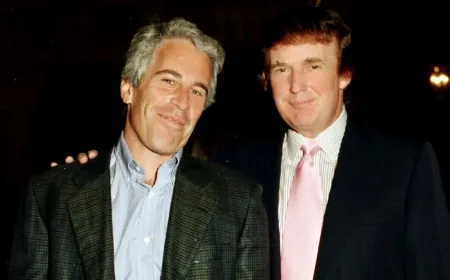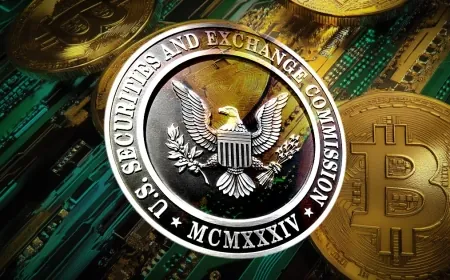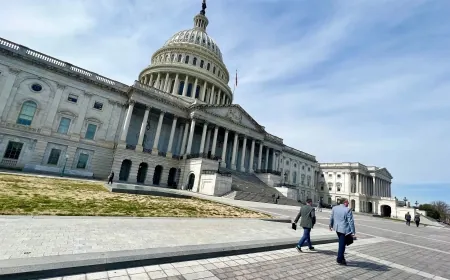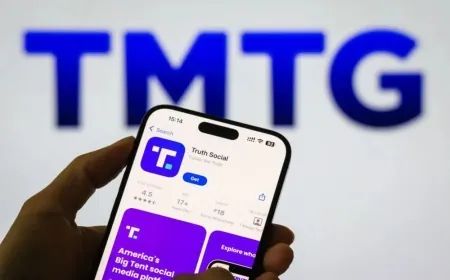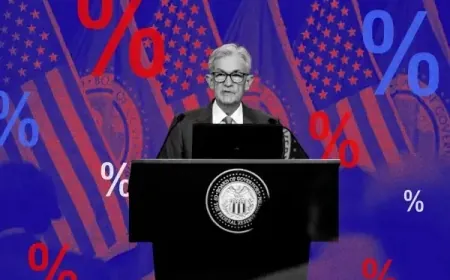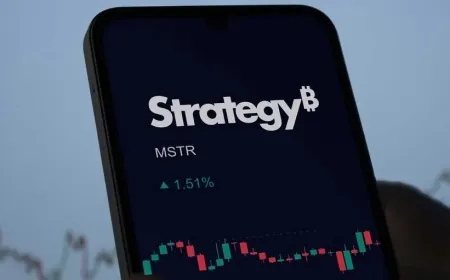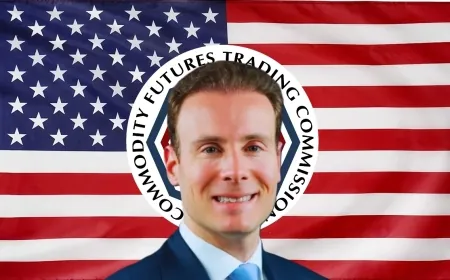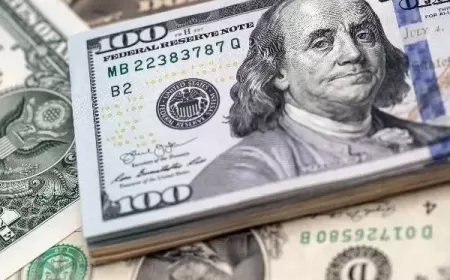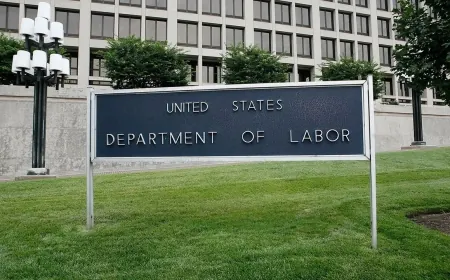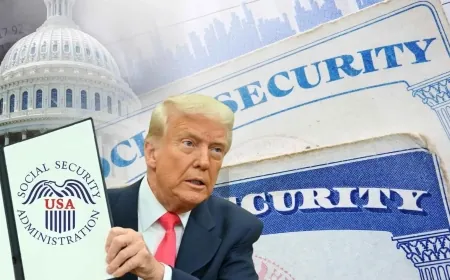Trump Plans to End Federal Income Tax, Replace It With Tariffs
President Trump proposes scrapping income tax and funding the U.S. budget with tariffs—raising economic, legal, and global trade concerns.
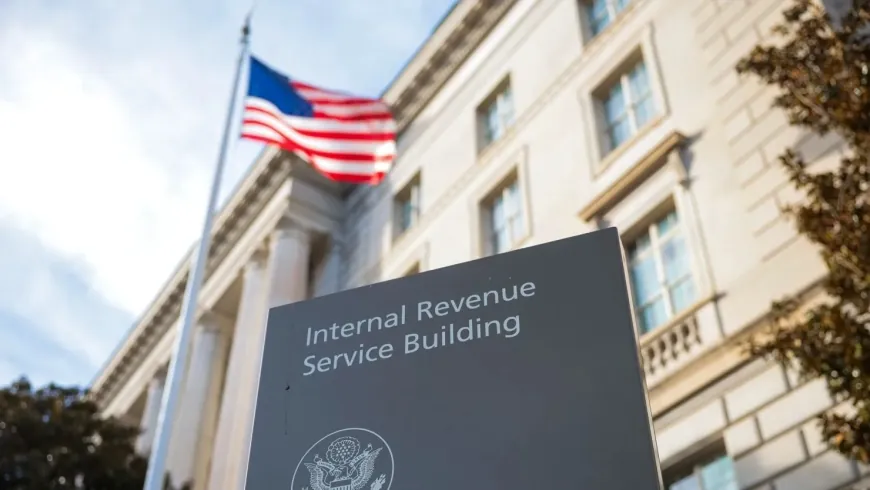
Washington, D.C. — President Donald Trump has begun moving forward with a proposal to eliminate federal personal income taxes, replacing them with a nationwide system of import tariffs. The plan, first introduced during his 2024 campaign, is now under review by senior administration officials and select members of Congress. Supporters say the shift would reduce federal overreach and simplify tax compliance, while critics warn it could raise consumer prices, spark trade disputes, and place a disproportionate burden on working-class families.
This idea, once floated during his initial campaign in 2016 and again in 2020, has now moved beyond rhetoric. Administration officials have begun laying the legal and logistical groundwork for what they are calling a “reciprocal trade-based revenue model.” In public appearances and internal briefings, the president has framed the shift as both a patriotic necessity and a means of economic justice, arguing that Americans should no longer be penalized for their income while foreign nations profit from U.S. consumer markets.
This sweeping plan has ignited fierce debate across economic, political, and international circles. Its proponents see it as a bold reset of a bloated tax system and a move toward economic nationalism. Critics warn it could trigger a global trade war, drive inflation, and disproportionately hurt lower-income Americans.
But beyond the political fray lies a complex question of feasibility: Can the United States truly replace its income tax revenue with tariffs? And if so, at what cost?
Trump Proposes Replacing Federal Income Tax with Tariff Revenues
During a recent rally in Ohio, President Donald Trump proposed eliminating the federal income tax entirely, suggesting the U.S. government should instead fund its operations through tariffs on imported goods. “We’re going to get rid of the income tax for American workers,” he said. “No more IRS. The money will come from foreign countries.”
The proposal, though not backed by formal legislation yet, would mark a dramatic shift in U.S. tax policy. In fiscal year 2023, federal income tax accounted for more than $2.2 trillion—roughly half of total federal revenue, based on Congressional Budget Office data.
Trump’s idea would require tariffs to generate equivalent income, meaning a steep increase in both the scope and rate of duties on goods entering the country. Current tariffs, even at elevated levels, contribute only a fraction of what income taxes deliver annually. As of mid-2025, duties collected on imports totaled about $97 billion—less than 5% of the revenue needed to replace personal income tax.
Historically, tariffs were the U.S. government's main revenue source before the 16th Amendment legalized a federal income tax in 1913. But today’s economy, deeply globalized and driven by international trade, presents challenges that didn’t exist in the 19th century.
Trump’s approach also reflects his long-standing opposition to multilateral trade agreements and institutions. He has repeatedly criticized the North American Free Trade Agreement (NAFTA), its successor USMCA, and the World Trade Organization, arguing they allowed foreign producers to exploit U.S. markets while American workers bore the financial burden.
The proposal has sparked concern among economists and policymakers, who warn that relying heavily on tariffs could raise prices on consumer goods, strain household budgets—especially in low- and middle-income brackets—and provoke trade retaliation from key economic partners.
Nonetheless, Trump’s message was clear: shift the cost of government away from wage earners and onto foreign manufacturers. How that would be executed in policy terms remains to be seen.
The Revenue Gap: Can Tariffs Replace the IRS?
Replacing the federal income tax is not merely a political gesture — it is a staggering fiscal challenge. In 2024, the Internal Revenue Service collected nearly $2.4 trillion in individual income taxes. Corporate taxes and payroll contributions (for programs like Social Security and Medicare) accounted for additional streams, but personal income taxes alone formed nearly half of total federal revenue.
For Trump’s tariff-centric model to succeed, it would need to generate that same amount — or more — through import taxes. This raises two critical questions: how high would those tariffs need to be, and how would they affect the broader economy?
Currently, the U.S. imposes tariffs on approximately 12,000 types of imported goods, with average rates between 1.5% and 5%. Trump has already increased those rates selectively: Chinese electronics, Canadian aluminum, and Mexican agricultural products have seen tariffs as high as 25% to 145% under his administration in recent months.
But to close a $2.4 trillion gap, economists estimate the average tariff rate would need to be raised to over 40% across all imports — a figure that would immediately and dramatically impact consumer prices, manufacturing supply chains, and international trade relationships.
“If you tax everything coming into the country at 40%, you essentially create a de facto wall around the economy,” said Dr. Rachel Munroe, senior economist at the Brookings Institution. “That kind of shock would ripple across every sector — from retail and construction to healthcare and tech — not to mention international diplomacy.”
Domestic Consequences: Inflation, Consumption, and Class Divide
Under the proposed tariff model, the cost of imported goods would rise sharply. This includes everything from electronics and vehicles to clothing, household appliances, pharmaceuticals, and raw materials used in manufacturing.
Such price increases amount to a consumption tax. But unlike income taxes, which scale with earnings, consumption taxes hit everyone equally at the checkout line — regardless of income level. That creates a regressive structure, where lower- and middle-income households end up paying a larger share of their earnings on basic goods.
A family earning $45,000 per year and spending most of their income on essentials would see their monthly expenses climb as imported goods become more expensive. Meanwhile, a household earning $250,000 annually, which might save or invest a large portion of its income, would pay a smaller relative share under the tariff model.
“The burden of this plan falls hardest on those who spend most of what they earn,” explained Gabriel Torres, a senior policy analyst at the Urban Institute. “You’re shifting tax responsibility from income to consumption — which sounds clean on paper but in practice disproportionately affects the working class.”
This inequality could be further exacerbated by the effect tariffs have on inflation. If import prices surge, domestic producers — shielded from foreign competition — may raise their own prices as well. Over time, this can lead to a widespread increase in consumer costs without corresponding wage growth.
Historical Parallels: Tariffs Then and Now
To understand the stakes of Trump’s proposal, it's useful to look back. Before the creation of the IRS, tariffs funded most federal operations. In 1880, for example, nearly 58% of federal revenue came from customs duties. But that system was built for an economy far less complex and globalized than today's.
In the early 20th century, rising government expenditures — including war debts, public infrastructure, and social welfare programs — made tariffs inadequate. The federal income tax, introduced via the 16th Amendment in 1913, filled that gap. By World War II, income taxes had become the primary source of federal revenue, and they have remained so since.
Critics of Trump’s plan argue that reverting to a 19th-century revenue model in the 21st-century digital economy is impractical.
“Our economy is not an island,” said Susan Liao, professor of public policy at Georgetown University. “Even the most ardent nationalists have to accept that we rely on global supply chains — for medicine, for energy, for technology. A tariff-only model will strain every link in that chain.”
Global Fallout: Allies, Rivals, and Trade Retaliation
Perhaps the most unpredictable element of Trump’s proposal is how it would reverberate internationally. Major trading partners — including the European Union, China, Canada, and Mexico — have already signaled their opposition to new tariffs introduced since early 2025.
The administration’s April 2025 hike on Chinese semiconductors, which raised tariffs from 104% to 145%, prompted retaliatory measures from Beijing, including export controls on rare earth metals critical to American electronics and defense industries. Canada has threatened retaliatory tariffs on American dairy, whiskey, and car exports. The EU has opened a formal complaint at the World Trade Organization (WTO).
The risk is not merely diplomatic. According to a June 2025 report by the Peterson Institute for International Economics, retaliatory tariffs imposed by U.S. trading partners in response to Trump's earlier tariffs during his first term cost the American economy $1.7 billion per month in lost exports.
“Trade wars are real wars, economically speaking,” said Inez Ramirez, a former WTO trade negotiator. “They erode alliances, disrupt supply chains, and hurt American exporters just as much as they hurt foreign ones.”
Moreover, the effectiveness of tariffs depends on the willingness of trading partners to continue engaging with the U.S. market. If alternative markets become more attractive — especially those in the Global South or East Asia — the U.S. could find itself increasingly isolated.
New Revenue Model Confronts Legal and Political Challenges
Trump’s legal team has floated the idea of using the International Emergency Economic Powers Act (IEEPA) to justify sweeping tariffs without congressional approval, framing the policy as a national security measure. This legal strategy, used previously during the China trade war of 2018–2019, may face serious judicial scrutiny.
Even within Trump’s Republican Party, there is no unanimous support. Fiscal conservatives worry that such a policy shift could destabilize federal revenue. Senate Democrats have promised to block any such legislation and are already drafting counterproposals to reinforce income tax protections.
House Speaker Elise Stefanik has indicated openness to discussing “reciprocal trade measures” but stopped short of endorsing a full replacement of the income tax.
In parallel, federal agencies are scrambling to model the long-term fiscal and economic consequences of such a move. The Treasury Department’s internal analysis — leaked last month — warned of a possible 6% drop in GDP over five years if the tariff regime were fully implemented without compensating domestic production increases.
Public Opinion and the Political Stakes
Despite the economic concerns, Trump’s proposal has resonated with a significant portion of the American public. A July 2025 Pew Research survey found that 54% of Republicans and 28% of independents support eliminating income tax if it means paying more at the store instead of during tax season.
The idea plays well in rural America, where resentment toward federal institutions runs high. In interviews conducted in battleground states like Michigan, Pennsylvania, and Georgia, voters expressed enthusiasm about shrinking the IRS and punishing foreign companies.
“I’d rather pay more for a made-in-USA product than get taxed on every paycheck,” said Mike Hannigan, a steelworker in western Pennsylvania. “Let China pay our taxes for once.”
But in suburban and urban areas, especially among younger and lower-income voters, the plan is viewed more skeptically. Critics worry about rising living costs and worsening economic inequality.
Tariff Tax Plan Faces Crucial Tests
Trump administration’s proposal to dismantle the federal income tax system and replace it with a tariff-driven revenue model is entering a critical phase. Over the coming year, this policy will likely encounter resistance across several fronts—including legal challenges, legislative pushback, and diplomatic tension from major trade partners. Economists continue to debate whether tariff collections alone can generate sufficient revenue to sustain federal programs without significantly raising consumer prices. The question now facing both lawmakers and the public is not only financial, but foundational: how should the nation pay for its government, and who ultimately bears the cost?
Also Read: Trump Says U.S. Could Impose Tariffs if Trade Deal With Canada Fails
